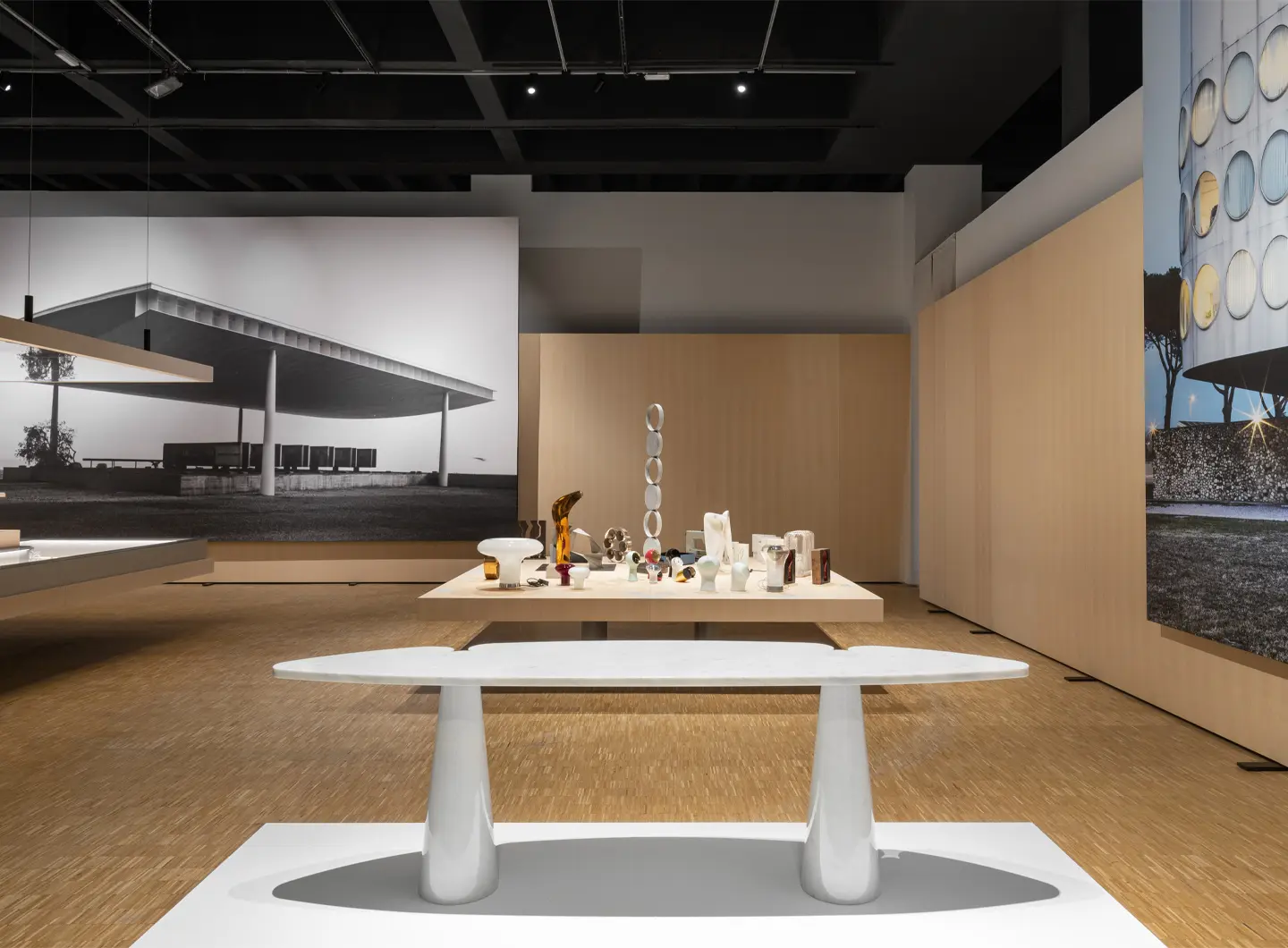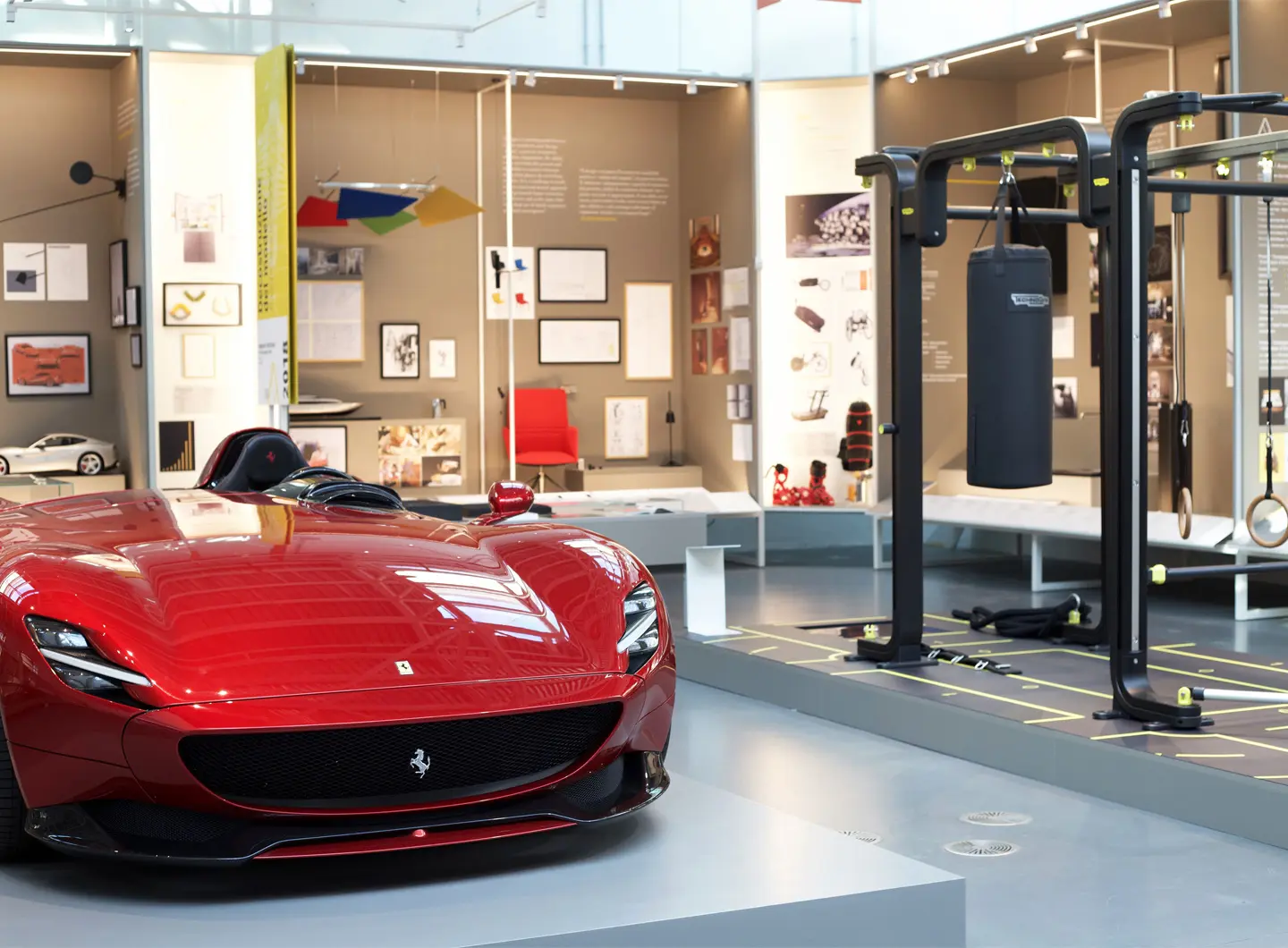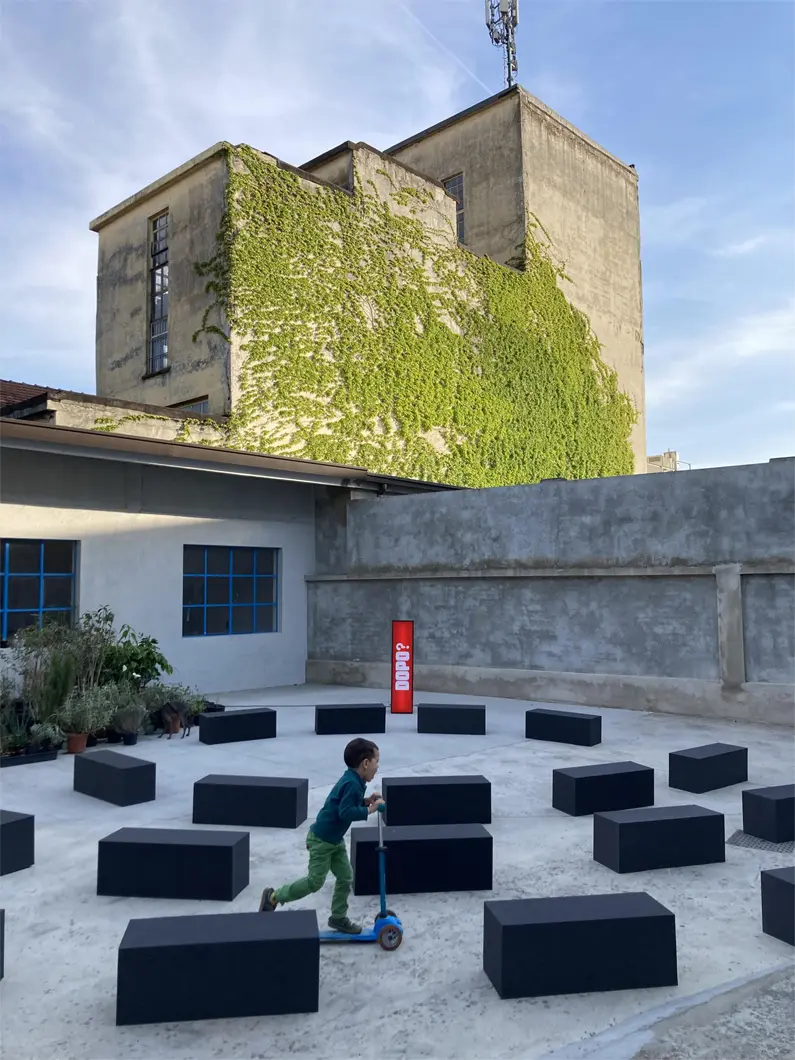From BIG to David Chipperfield, Frank Gehry to Snøhetta: a world tour of the best buildings set to open in 2026
In Milan for the Salone? 10 unmissable places to see in the city
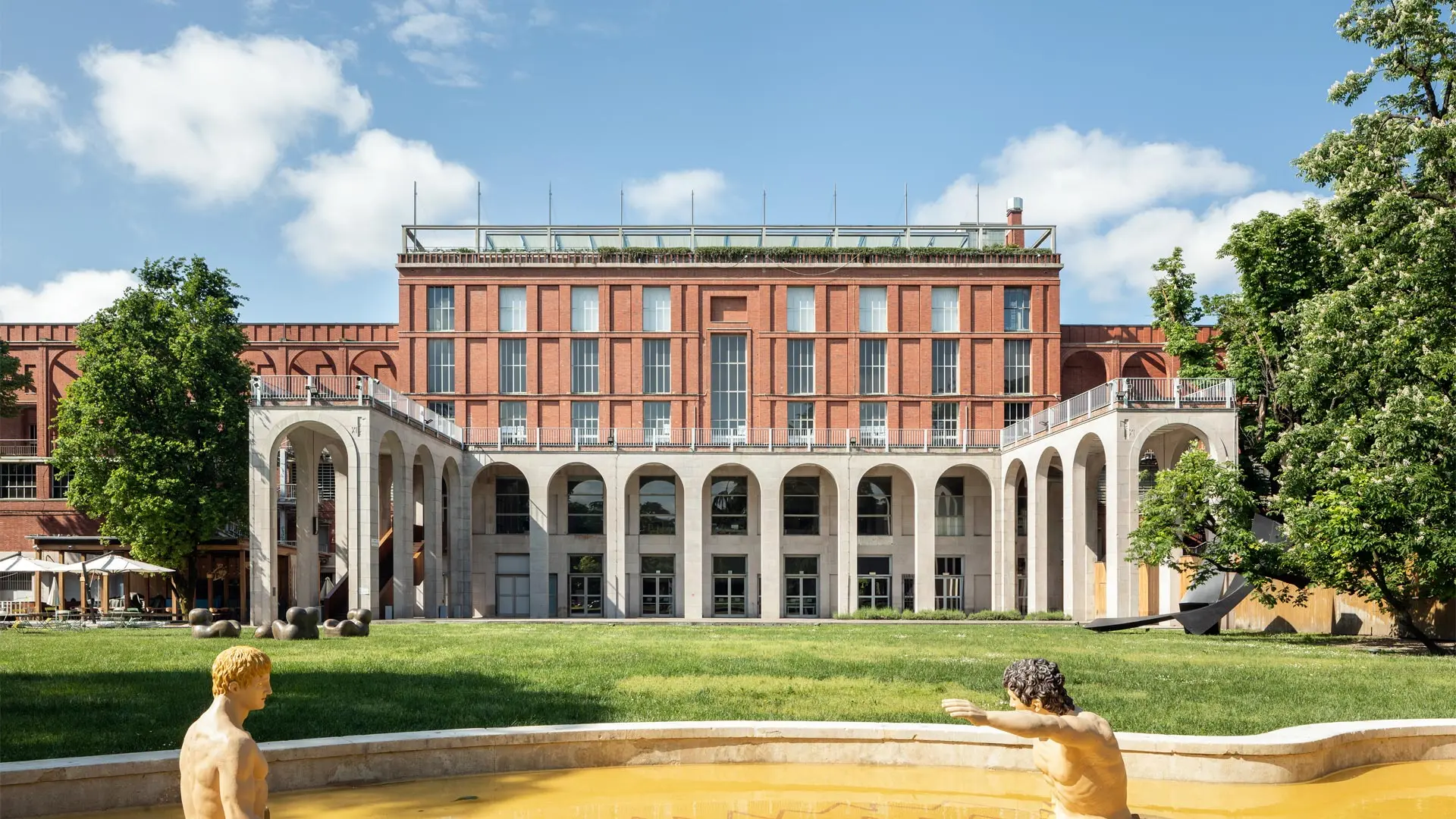
Triennale di Milano, photo Gianluca Di Ioia
10 essential places for a flavour of Milan: period buildings, private studios and museums, art and design exhibitions, cultural spaces and traditional trattorias
Milan is a visionary city, dynamic and multifaceted, but it is at its most fascinating during the Salone del Mobile, when it dons its mantle as the global capital of design. We’ve thought up 10 unmissable places for you to check out as you go to and from the Rho Fiera fairgrounds, to help you make the most of the city and let yourself be amazed by just the right mix of design, design and architectural culture, the odd panoramic view, a spot of relaxation and great, energetic vibe.
M1 - Red Line (Linea Rossa)
First on the list is a transit area. The underground is the fastest way of moving around the city and getting to Rho Fiera. The M1 – known as the Red Line (Linea Rossa) – is almost 60 years old and is still a source of Italian design pride. With interiors designed by Franco Albini and Franca Helg, with Bob Noorda responsible for the graphic design, it criss-crosses the city with its retro feel. One of its two terminuses is, in fact, the Rho Fiera stop, gateway to the 61st edition of the Salone del Mobile.Milano, from 18th to 23rd April. As well as the many innovative new products, take a look at one of Europe’s biggest fairground venues, with its sinuous glass and steel roof, designed by Studio Fuksas in 2005.
The Salone is easily accessible by public transport, by train, from the airports, and by shared taxi, with one station for each Gate (East-South-West). Here you can find all the details and information to reach the Salone del Mobile. Inside the fair site accessibility to all the spaces is also guaranteed to people with disabilities and those with reduced mobility thanks to accessorized paths and services.
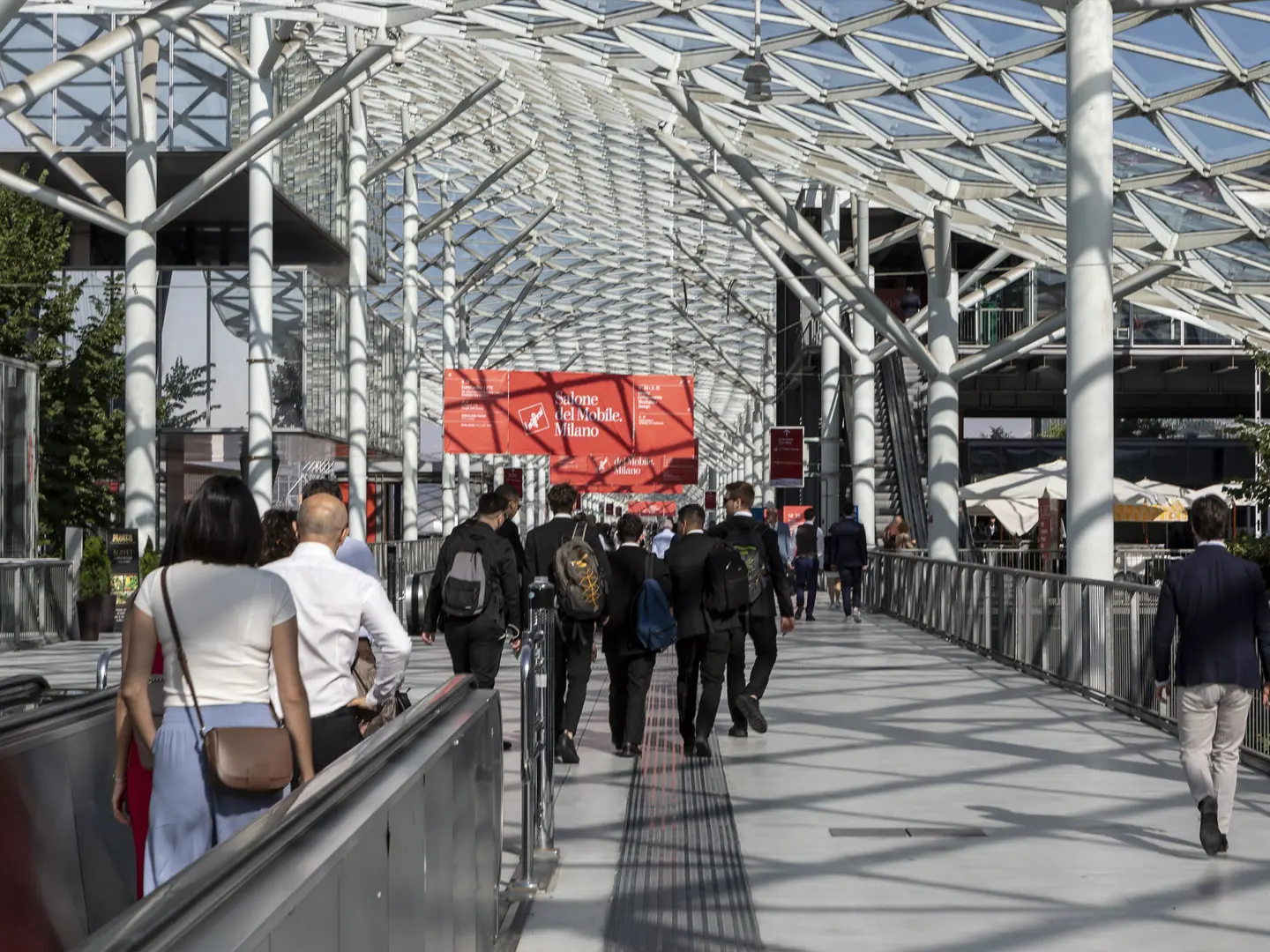
Ph. Andrea Mariani
Triennale Milano
Sticking with the Red Line, Cadorna is one of the stops worth getting off at. Before leaving the microcosm that is the station, take an introspective moment with Alberto Garutti’s piece Tutti i passi che ho fatto nella mia vita mi hanno portato qui, ora (All the steps I have taken in my life have led me here, now). Opposite, by the exit, stands the famous public artwork Needle, Thread and Knot by Claes Oldenburg, a 18-metre-high sewing needle piercing the square with a robust three-coloured thread. After a short walk along the Sempione Park with Gio Ponti’s Torre Branca rising up between the trees, you get to the temple to design – the Triennale, with its new Italian Design Museum, helmed by Marco Sammicheli. The exhibition “Droog30. Design or Non-design?”, co-produced with the Het Nieuwe Instituut in Rotterdam and curated by Maria Cristina Didero and Richard Hutten, celebrates the innovative Dutch group, while another not-to-be-missed exhibition is Lisa Ponti. Disegni e Voci (Drawings & Voices), curated by Salvatore Licitra and Damiano Gullì. Check out the projects by the Duson Gallery (South Korea), Japan Creative (Japan), Moravian Gallery (Czech Republic), Timberland Worldwide and Uzbekistan Art and Culture Development Foundation (Uzbekistan), too. Also deserving of a visit are the retrospective Angelo Mangiarotti. Quando le Strutture Prendono Forma (When Structures Take Shape), the permanent Casa Lana installation by Ettore Sottsass, and the exhibition La Parola, as well as the Mirdidingkingathi Juwarnda Sally Gabori exhibition, presented within the framework of its partnership with the Cartier Foundation for Contemporary Art.
Fondazione Castiglioni
Also within a few steps of Cadorna, there’s a chance to immerse yourself in the history-rich Fondazione Castiglioni. The four rooms of the studio in which Achille Castiglione explored the forms, techniques and materials that gave shape and substance to the story of design (see also his prototypes and models) are well worth a visit. With the concept of function foremost and following methods employed in museums for the visually impaired, during Design Week the exhibition Fa’ Balla’ i Man (Let Your Hands Dance) will focus visitors’ attention on the shape of the objects produced by the Castiglioni brothers, suggesting employing tactility as a tool for understanding them.
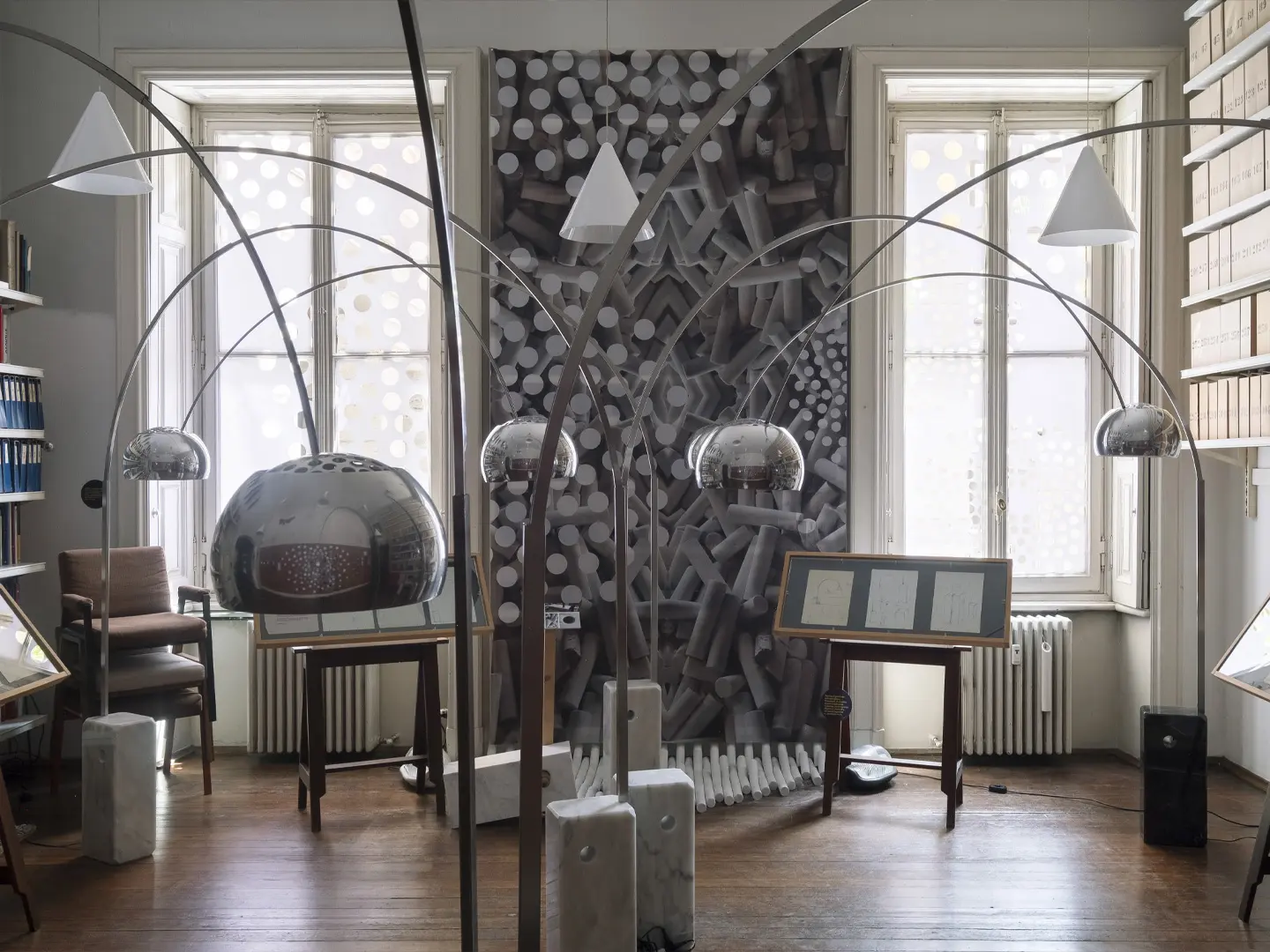
Courtesy Fondazione Castiglioni
Museo del Novecento
Still on the Red Line, the Duomo stop is non-negotiable. In addition to admiring the beauty of the cathedral rising up to the sky, don’t miss the neighbouring Museo del Novecento, which contains more than 300 works of 20th century art, from the Futurism Gallery to the Permanent Collection. Given the underlying Euroluce concept, The City of Lights - in Pavilions 9, 11, 13 and 15 at Rho Fiera – there’s an ideal connection here with the spatial artist Lucio Fontana, for whom light was a fundamental plastic element. His Concetto Spaziale al Neon (Spatial Concept with Neon Light) created in 1951 for the 9th Triennale di Milano, is unmissable: using a 100-metre-long neon tube, Fontana drew free trajectories in the air made of light and with light, curving and twisting around themselves in a synthesis of painting and sculpture. An experiment that goes back a long way. Wow factor guaranteed.
DOPO?
Converted from a former workshop located between Corvetto and Porto di Mare, DOPO? hosts designers, set designers, architects and researchers. Don’t miss this original cultural space in which time is always made for discussion, exchange and empathy; a flexible and transformable place in which joint creative projects of every kind are devised. During Design Week, try and catch the exhibitions The Archive of Thoughts, curated by Loher and Form Magazine, InhabitableWorlds on the new Dutch Design, curated by Cecilia Casabona and Ramón Jiménez Cárdenas and Fuori Contesto, devoted to collectible Italian design in collaboration with 5VIE. There will also be artistic performances and DJ sets, video marathons, and book and magazine presentations. A word of advice: make a note of the opening night on 19th April, bearing in mind that at 10 pm there will be a performance by Francesca Heart, curated by Kadmonia and Sali & Tabacchi.
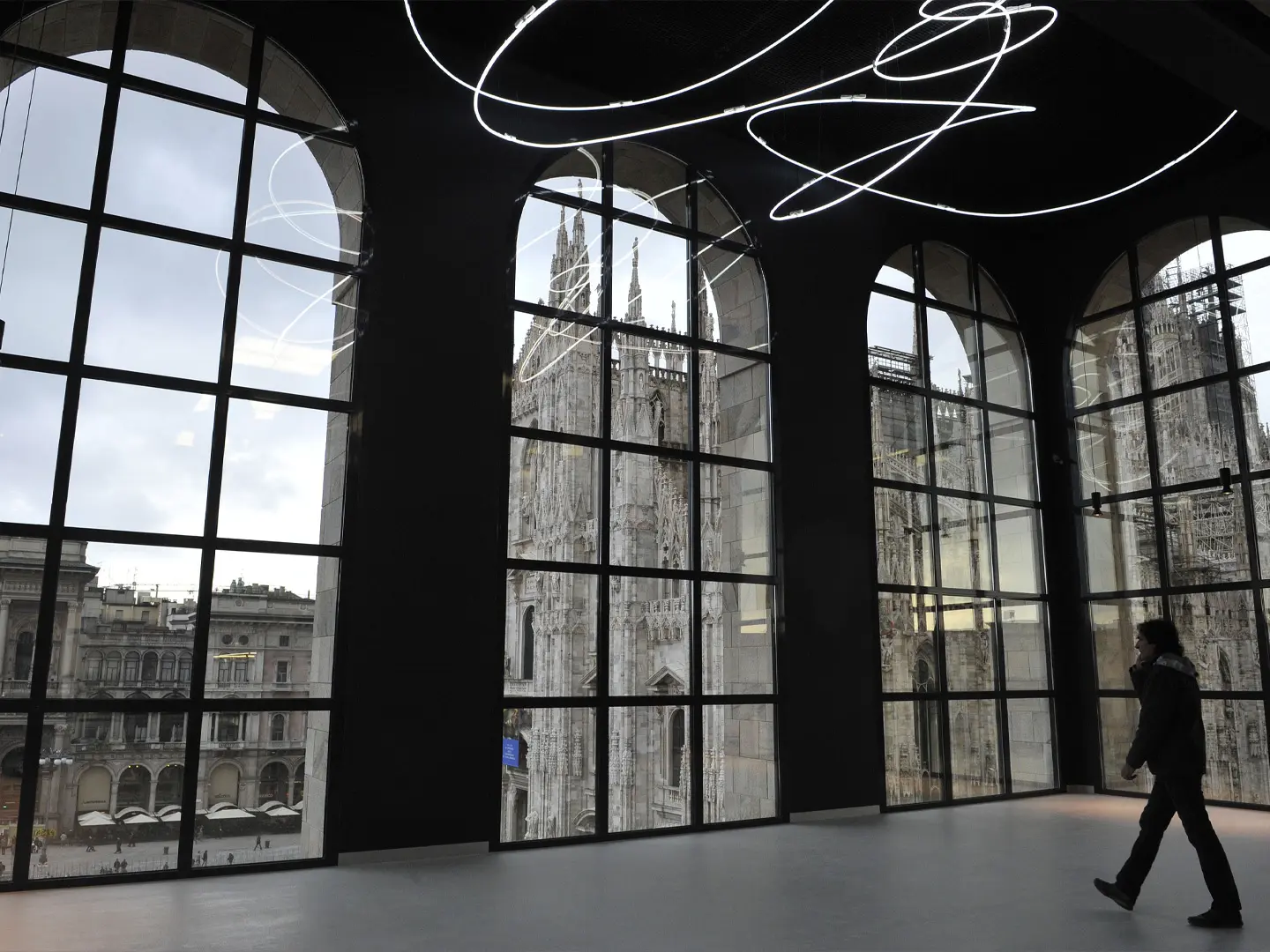
Museo del Novecento, ph. Lonati. Courtesy Comune di Milano
Museo Bagatti Valsecchi
In the heart of the city, between Via Gesù and Via Santo Spirito, the Bagatti Valsecchi museum-house, is the upshot of an extraordinary late 19th century collecting adventure. The 19 rooms open to visitors on the piano nobile are crammed with tapestries and strange and mysterious objects, reminiscent of castles in fairytales. For Design Week, the house will be turned into a “Palace of Wonders” – its rooms reinvented with the unique addition of design pieces selected by Katrin Herden with the architect Alessandro Zarinelli of Studio MHZ. Featured brands include Zaha Hadid Design for Karimoku with the launch of the Seyun wooden furniture collection and Hommes by Micael Carvalho. The BA-VA Cushion Collection, produced exclusively with Sohil Design, will be on sale in the museum shop.
ADI Design Museum
A few years ago, the ADI Design Museum opened in the area between Chinatown and Via Maroncelli. A cultural hub devoted to the history of the Compasso d’Oro Award, it is geared to promoting Italian design culture. Drop in for a cup of coffee and take a look at the exhibition Italy: A New Collective Landscape which focuses on the languages of contemporary design, from its own role to that of its protagonists. The issues facing us at this particular moment in time at global level and the environmental and social transformations constitute the starting point for the work of the Italian designers under 35, presented in the collective show curated by Angela Rui with Elisabetta Donati de Conti and Matilde Losi, in the Parasite 2.0 installation. Don’t miss the Permanent Collection, split into two sections, Il Cucchiaio e la Città/The Spoon and the City and Presente Permanente (Present Permanent).
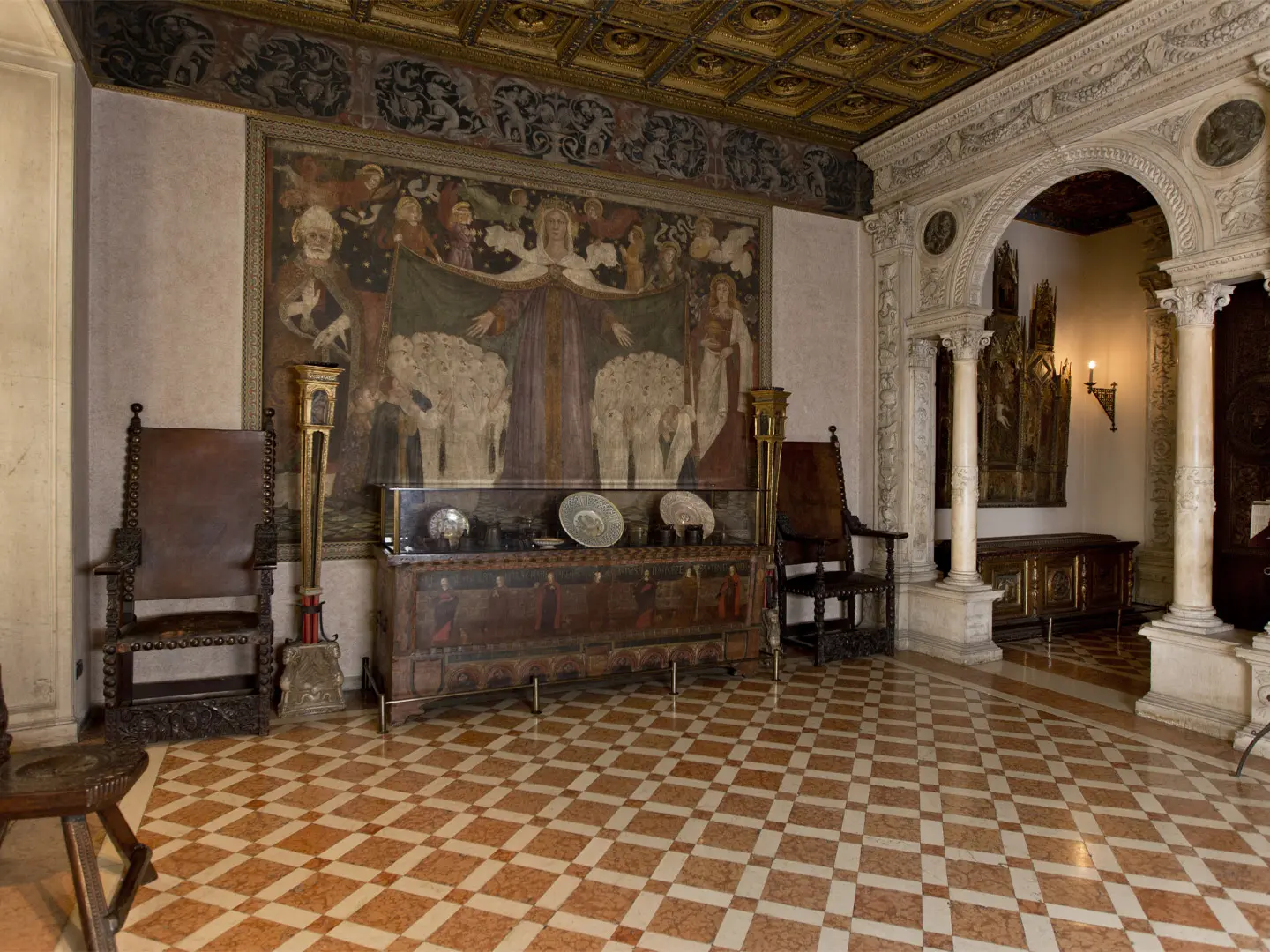
Casa museo Bagatti Valsecchi, Affresco, ph. Ruggero Longoni
Torre di Pisa
The pace is always frenetic in Milan, but stopping for a bite in the centre of Brera is a good way to recharge one’s batteries. Dating back to 1959, the trattoria Torre di Pisa has remained true to its origins, conserving the windows out onto Via Fiori Chiari, the wooden chairs, the open kitchen and the separate rooms. Frequented by painters, stylists, industrialists and architects – Ettore Sottsass ate here very day – it specialises in traditional Tuscan peasant fare. If you can’t get in, try two simple but elegant restaurants in the same area, suspended in time: La Briciola and the Latteria San Marco (the spaghetti with lemon and the Crudaiola [a cold vegetable soup or pasta with zucchini, aubergine and ricotta] are worth a trip to Milan in themselves.
Bar Basso
With its red neon sign, crystal chandeliers, wooden bar and vintage details, the Bar Basso in Via Plinio is the top nightspot for grabbing a drink, meeting people from near and far and designers from all over the world during Design Week. It is famous for being the place where the Negroni Sbagliato, in which gin is replaced by Prosecco, was invented and which is an absolute must. It’s great every day, but especially on Thursdays!
Plastic
Near the Fondazione Prada, in Via Gargano, there’s a place that will never lose its cool and which has celebrated freedom in all its forms: the Plastic club. A triumph of music, aesthetics, glitz, art, night life and perdition. From Madonna to Andy Warhol, Grace Jones and Elio Fiorucci, the club’s Milanese evenings have gone down in history. Just as when it was in its historic Viale Umbria premises, the club still boasts a number of rooms and entertainment with disco music from the likes of Le Cannibale, Nul, and Club Domani. Even now you have to queue, never knowing whether you will actually get in or not, but once inside, you’re in for an unforgettable evening.


 Exhibitions
Exhibitions
